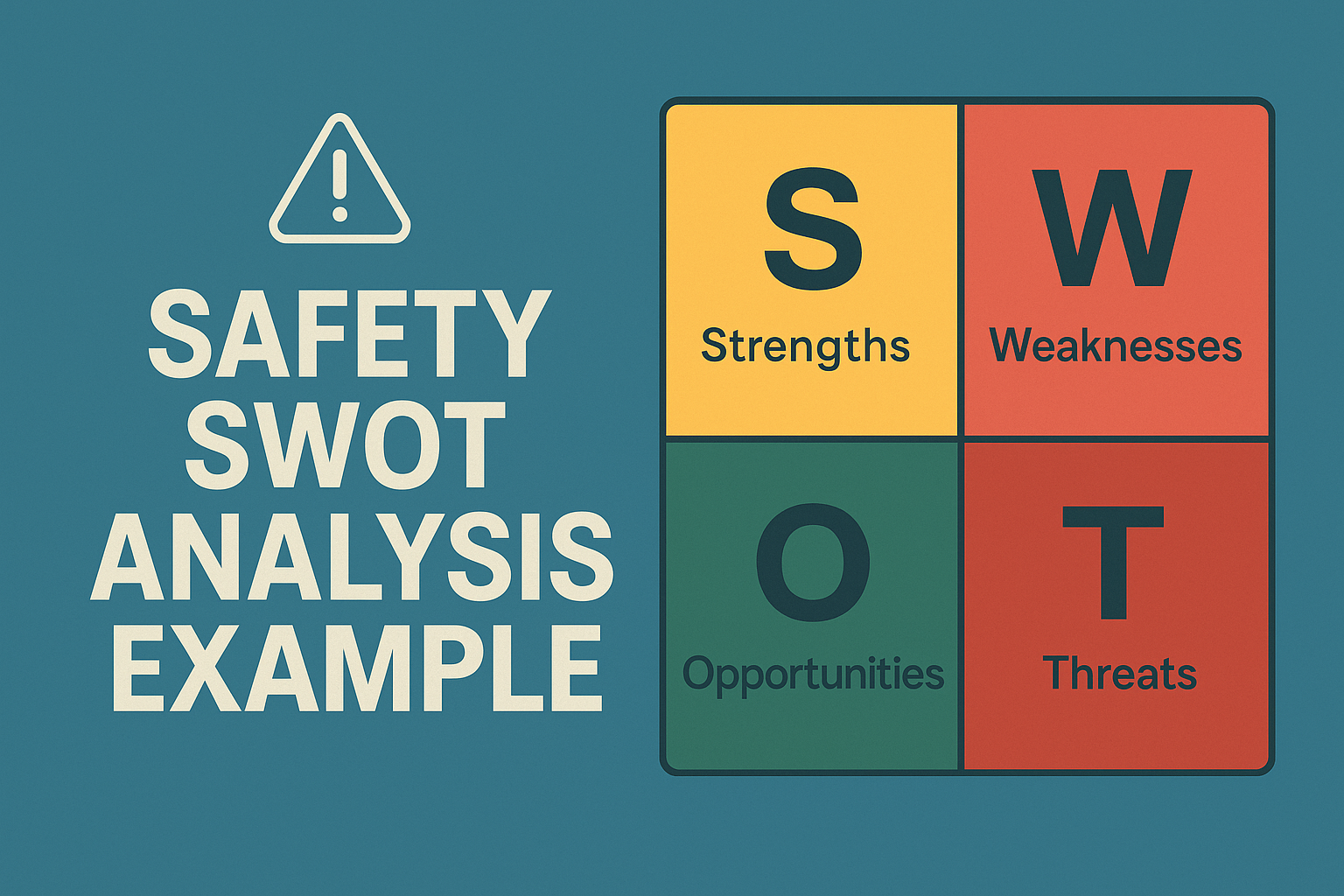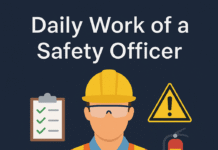
Safety SWOT Analysis Example
When was the last time you took a step back and looked at your organization’s safety program with a critical eye? That’s where a Safety SWOT analysis comes in handy. It’s a simple but powerful tool that helps you understand your safety strengths, spot weaknesses, uncover opportunities, and be aware of potential threats.
What Is a SWOT Analysis in Safety?
SWOT stands for Strengths, Weaknesses, Opportunities, and Threats. It’s a structured planning method used to evaluate these four elements in a project or business venture—in this case, your workplace safety program.
Importance of Conducting a Safety SWOT Analysis
Why bother? Because safety isn’t something you set and forget. A SWOT analysis helps you:
- Evaluate your current safety status
- Identify gaps before they become hazards
- Build a stronger safety culture
- Plan future improvements with clarity
Understanding the Four Components
Strengths in Workplace Safety
These are the internal safety features that are working well. For example:
- Comprehensive safety training programs
- High employee engagement in safety meetings
- Strong incident reporting culture
Weaknesses in Safety Programs
These are internal areas that need improvement. Examples include:
- Lack of updated SOPs (Standard Operating Procedures)
- Insufficient PPE supply
- Inadequate safety inspection frequency
Opportunities for Safety Improvement
These are external chances to improve your safety systems, such as:
- Government safety grants
- New safety technologies like wearable trackers
- Industry collaborations or partnerships
Threats That Affect Workplace Safety
Threats are external factors that may harm your safety performance:
- Increased subcontractor activity with limited oversight
- New regulations that require adaptation
- Labor shortage impacting supervision quality
Sample Safety SWOT Analysis Table
Let’s see how this might look for a Construction Company:
| Category | Example |
|---|---|
| Strengths | Certified safety officers on every site |
| Weaknesses | Inconsistent toolbox talks across sites |
| Opportunities | Adoption of AI-based hazard detection tools |
| Threats | Rising number of untrained laborers on site |
Strengths Example
The company has ISO 45001 certification, conducts daily safety walks, and maintains a zero-fatality record for the past 3 years.
Weaknesses Example
Some high-risk activities lack proper Job Safety Analyses (JSAs), and there’s no formal emergency evacuation drill schedule.
Opportunities Example
New government incentives are available for implementing smart PPE and digital safety platforms.
Threats Example
Frequent changes in local construction safety laws and language barriers with migrant workers increase the risk of miscommunication.
How to Conduct a Safety SWOT Analysis
Step 1: Identify the Scope
Decide whether you’re analyzing the entire organization or just one department, such as maintenance or electrical.
Step 2: Gather Data
Collect incident reports, safety audit findings, and employee feedback.
Step 3: Brainstorm with Stakeholders
Get input from supervisors, safety officers, and even frontline workers—they see things you don’t.
Step 4: Analyze and Prioritize
Group ideas and rank them. Focus first on the areas with high risk or major impact.
Step 5: Create a Strategic Action Plan
Turn insights into action:
- Fix weaknesses
- Mitigate threats
- Amplify strengths
- Take advantage of opportunities
Tips for Maximizing the Impact of SWOT Analysis
Involve Safety Committee Members
Their collective experience and insight are gold when identifying real issues and practical solutions.
Align with Safety Goals and KPIs
Don’t just do a SWOT for the sake of it. Tie it into your safety performance targets, such as reducing TRIR or LTIFR.
Review and Update Regularly
Safety conditions change. Make it a point to revisit your SWOT analysis annually or after any major incident.
Benefits of Using SWOT in Safety Planning
Better Risk Awareness
You’ll know exactly where your risks are—and where you’re doing well.
Proactive Safety Culture
By engaging your team, you promote ownership and encourage everyone to speak up about safety.
Improved Compliance and Incident Reduction
You’re more likely to stay ahead of regulations and avoid fines, citations, or worse—injuries and fatalities.
Conclusion
A Safety SWOT analysis might look simple on paper, but it’s a powerful lens for viewing the real health of your safety program. It gives you a clear roadmap to improve, adapt, and lead from the front when it comes to health and safety. Whether you’re managing a small facility or a massive industrial site, don’t underestimate what a few honest insights can do.
So, take a moment. Sit with your team. Open that whiteboard. And SWOT it out—because safety starts with knowing where you stand.
10 Common Safety Mistakes Every HSE Officer Should Avoid
Top 5 Safety Tips for New HSE Professionals
Becoming a Safety Officer: A Step-by-Step Guide to Skills, Duties, and Compensation
Safety Manager Job Description: Key Duties, Skills, and Qualifications Explained
FAQs
1. What is the purpose of a safety SWOT analysis?
It helps organizations identify internal strengths and weaknesses, as well as external opportunities and threats, to improve their safety systems.
2. Can a SWOT analysis help reduce accidents?
Yes, by exposing blind spots and prioritizing safety improvements, a SWOT analysis directly contributes to accident prevention.
3. How often should a safety SWOT analysis be done?
Ideally once a year, or after significant incidents, audits, or regulatory changes.
4. Who should be involved in creating a safety SWOT analysis?
Include safety officers, supervisors, frontline workers, and management to get diverse perspectives.
5. Is there a standard format for safety SWOT analysis?
There’s no strict format, but using a four-quadrant table (Strengths, Weaknesses, Opportunities, Threats) is the most common and effective way.
























